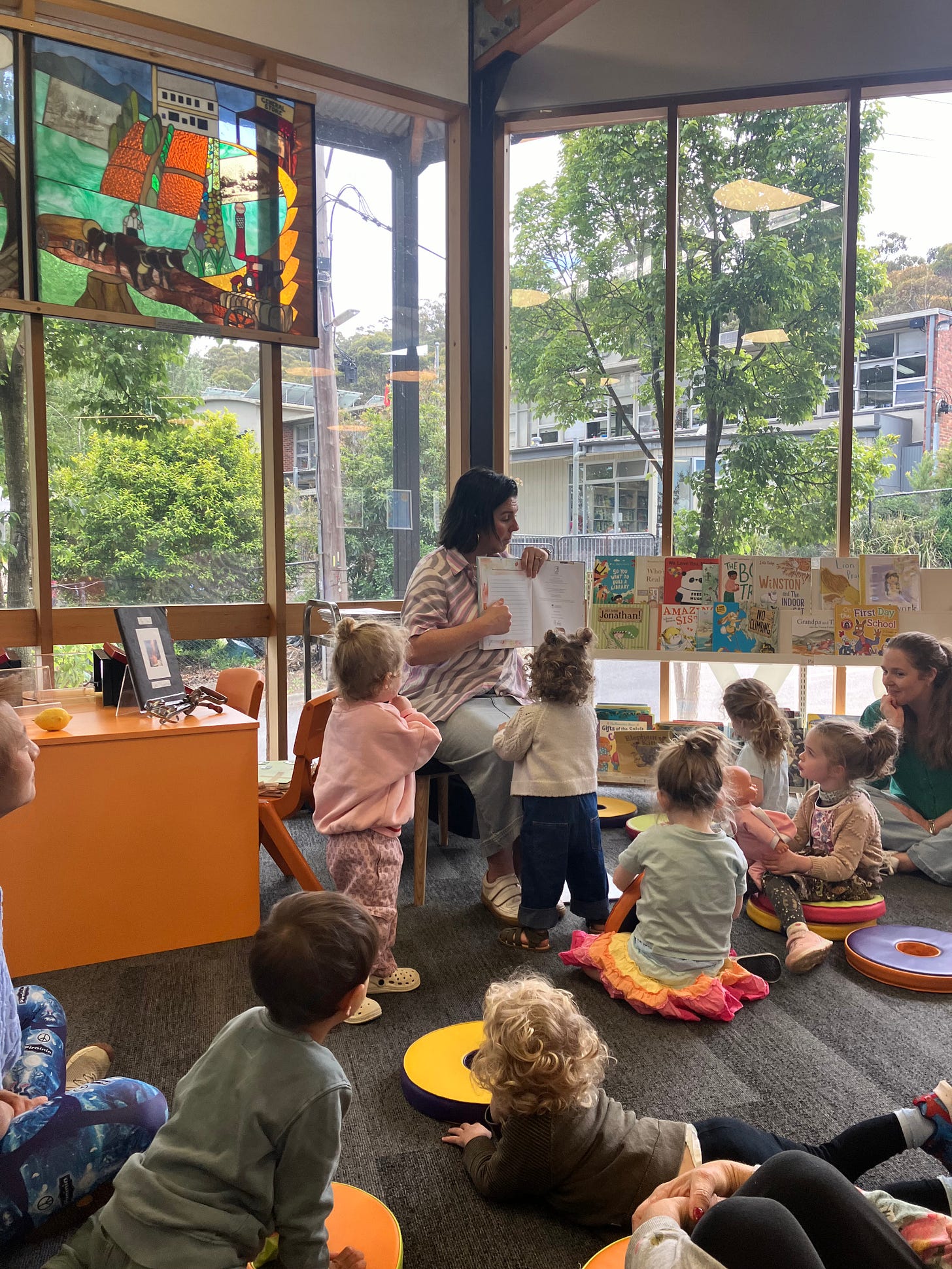Storytime secrets
Tricks of the trade from librarians and booksellers on the frontlines of storytime.

In my newsletter this past weekend I wrote some thoughts I had on storytime, especially the very difficult task of getting it right. I loved the comments and messages I received in the aftermath, especially around the idea that it’s often parents who misbehave during storytime, not the kids. (See: the coffee incident.)
And so, I reached out to a few readers who have years of storytime experience under their belts, to see what some of their top tips would be for both librarians and booksellers choosing the books and delivering the programs, as well as those watching and participating in the crowd. (And hopefully, not just dropping their kids and running off to do their own thing.)
The experts I spoke to came from both a library and bookshop context, where the desired outcome of storytime is slightly different, so bear that in mind. Regardless, they all pretty much mirrored each other’s top tips, as well as some of the big no-no’s.
This is what they had to say.
We want to create a sense of joy around reading and books and if you’re having fun, that will shine through and be contagious.
Eleni Tsakiris, a children’s librarian who has been delivering storytime for nearly ten years, said her number one piece of advice is to have fun with it. “Choose books and songs that you love. We want to create a sense of joy around reading and books and if you’re having fun, that will shine through and be contagious.”
Jade Timms, another librarian who works at a small library and puts emphasis on a relaxed and fun storytime, rather than running a tight ship, said you need to balance this with keeping the kids in mind. “Sometimes there will be a really cool, interesting book that I want to use, but I know it probably won’t be a hit with the kids because it’s too long or it doesn’t have a good rhythm. Their attention span is so short that you really have to work to keep them focused and even then, sometimes it’s a lost cause. I used to feel like a failure when a storytime event didn’t go to plan, but now I don’t care as long as the kids have fun.”
On this note, Jade also said that being flexible is key. “I always have an ideal plan laid out, but I’m also happy to mix things up. If the kids are antsy, maybe it’s time for a song? If they’re really distracted, I might choose to not read the final book and go straight into a craft.”
Eleni suggests having a storytime skeleton to work from, giving the audience a routine that is somewhat predictable. “For example, in our preschool storytime we always start with a ‘hello’ song, a warm-up dance, then 3 or 4 stories (with 1 song in between) before a craft activity. We use a visual schedule on a board so children can easily see what we have completed and what is coming up (especially good for neurodivergent children).”
The younger kids have a slightly different skeleton with more singing. “For our toddler storytime, I usually start with a few introductory songs and then a story, then some dancing songs before finishing with a few sit down songs. Good transitions can help with ‘training’ toddlers what to expect at each point.”
Erin Wamala from The Kids’ Bookshop said that book choice is vital. “Think about the age of your audience. Unless they are extremely engaging, long books won’t work for toddlers. Be sure that the illustrations are visible from the space in front of you, rather than lots of detail that is better viewed from a lap.” She also urges people not to rush through it. “Give the children time to react to each page. One of my pet hates is when someone races through the pages.”
Erin said that trialling your books in advance is an important part of being prepared. “Practice reading the book out loud—use the punctuation to guide you in the speed and rhythm of the book. Use the pauses!”
Jo Canham from Blarney Books & Art, who used to run a storytime in her store, is also a firm believer in having a test run. “Use engaging books that have been read through before the event.” She added that having spare copies helps further engagement with the stories, so it’s good to have extras on hand that people can borrow (library) or buy (bookshop).
Keep reading with a 7-day free trial
Subscribe to I Read A Lot to keep reading this post and get 7 days of free access to the full post archives.




